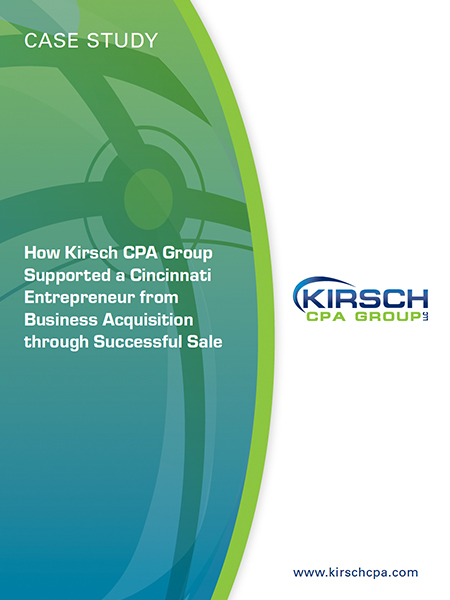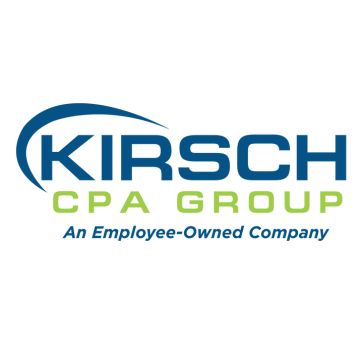CAA Offers Tax Breaks for Manufacturers
Feb 04, 2021

The Consolidated Appropriations Act (CAA) — the massive spending package passed in December 2020 — includes many tax breaks designed to help businesses that have been struggling during the COVID-19 pandemic. Specifically, the new law contains the following seven tax breaks that may be of particular interest to manufacturers.
1. New and Improved PPP Loan Regime
The CARES Act — a COVID-19-related economic relief measure from March 2020 — authorized loans under the Paycheck Protection Program (PPP) that can potentially be forgiven without any tax liability. Normally, loan forgiveness results in taxable income.
Under the CARES Act, however, there was a trade-off: You couldn’t deduct expenses paid with proceeds from a forgiven PPP loan, according to controversial guidance issued by the IRS.
The PPP expired on August 8, 2020. Now the CAA resurrects, expands, and revises this program. New PPP loans can be taken out through March 31, 2021, or until funding is exhausted. The new law also stipulates that expenses paid for with forgiven PPP loans are, indeed, tax-deductible. Previous IRS guidance to the contrary is now obsolete.
The CAA provides $284 billion for the second round of the PPP, which includes a new “second-draw” opportunity. Struggling small businesses with fewer than 300 employees may be eligible for second-draw PPP loans. The maximum second-draw loan amount is $2 million. Only one second-draw loan can be taken out.
The new law also expands the list of qualifying expenses that can result in PPP loan forgiveness. The expanded list is generally retroactive to March 2020, when the CARES Act was signed into law.
Various other rules and restrictions apply to PPP loans. Contact your tax advisor for more information about this program.
2. Employee Retention Credit for Employers
The CARES Act created the employee retention credit (ERC) to help businesses keep workers employed. Eligible employers could claim this refundable credit for 50% of the first $10,000 of wages (including health care benefits) paid to eligible employees from March 13, 2020, through December 31, 2020, under the CARES Act. The maximum credit is $5,000 per employee.
The CAA extends the ERC for eligible employers through June 30, 2021, with certain modifications. For example, as of January 1, 2021, the new law:
- Increases the maximum credit to $14,000 based on a 70% credit rate for the first $10,000 of qualified wages per quarter, for the first two quarters of 2021.
- Increases the number of employees allowed for eligible employer status from 100 to 500, and
- Allows employers that didn’t exist for all or part of 2019 to claim the credit, based on 2020 information.
In addition, the new law provides that employers that receive PPP loans can qualify for the ERC based on wages paid for with proceeds from PPP loans that aren’t forgiven.
3. Employer Credit for Sick and Family Leave Payments to Employees
The Families First Coronavirus Response Act (FFCRA), passed in March 2020, created a small employer tax credit to cover the cost of paying for mandatory paid sick and family leave taken for COVID-19 reasons. Eligible employers can claim a federal payroll tax credit for 100% of qualified leave payments.
The credit offsets the employer’s 6.2% Social Security tax component of the federal payroll (FICA) tax. It was initially available for amounts paid from April 1, 2020, through December 31, 2020.
As the pandemic continues, the CAA extends the credit for eligible sick and family leave payments to employees through March 31, 2021. Under the new law, employers aren’t required to pay sick or family leave after December 31, 2020. But employers that choose to do so may be eligible for the credit, based on FFCRA guidelines.
Important: Self-employed individuals who take qualified leave may be eligible for an equivalent tax credit.
4. Payroll Tax Deferral
Under a presidential executive order issued last year, an employer could choose to postpone payment of the 6.2% Social Security tax component of FICA tax withheld from qualified employee wages. However, employers weren’t required to do so.
The deferral was available for an employee with wages of less than $4,000 for a biweekly pay period (or an equivalent for another pay period). But the employer then had to deposit the deferred tax amount with the IRS by April 30, 2021.
The CAA gives employers more time to deposit the deferred payroll taxes. It extends the deferred tax payment deadline to December 31, 2021.
5. Business Meals
Under long-standing rules, a taxpayer can generally deduct 50% of the cost of business-related meals including those taken while traveling away from home on business, as long as the cost is properly substantiated.
The CAA temporarily allows taxpayers to deduct 100% of the cost of business-related food and/or beverages provided by restaurants in 2021 and 2022, subject to the deductibility considerations under preexisting IRS regulations. However, the new law doesn’t resurrect deductions for business-related entertainment expenses, which were eliminated by the Tax Cuts and Jobs Act.
6. Corporate Charitable Contributions
The tax law provides opportunities for corporations to benefit from contributions to qualified charitable organizations. To further facilitate gift giving during these troubled times, the latest legislation has enhanced the available corporate tax breaks.
For 2020, the CARES Act increased the deduction limit for corporate charitable cash contributions from 10% of taxable income to 25% of taxable income. The new law extends the increased deduction limit through 2021. Any excess corporate cash contributions are carried forward to subsequent tax years.
A food manufacturer or a firm in a related industry may claim an enhanced deduction for donations of food inventory for the care of “infants, the ill or needy” of up to 15% of taxable income. For 2020, the CARES Act increased the deduction limit to 25% of taxable income. The new law extends the increased deduction limit through 2021.
7. Work Opportunity Tax Credit
An employer can claim the Work Opportunity Tax Credit (WOTC) for hiring workers from certain disadvantaged groups. The maximum WOTC is $2,400 per employee ($9,600 for a disabled veteran).
This tax break, which has expired and been reinstated many times, was scheduled to end after 2020. The CAA extends the WOTC to cover first-year wages paid to qualifying employees who are hired in 2021 through 2025.
For More Information
These seven tax breaks are just the tip of the iceberg. For instance, the new law contains an array of other extenders, including certain energy-related provisions and industry-specific initiatives. Contact Kirsch CPA Group at 513.858.6040 for more information about provisions that are relevant to your manufacturing firm.
Sign Up for Email Updates
Accounting & Financial News

3 Critical Questions to Ask When Acquiring Construction Equipment
Acquiring equipment is a major strategic decision for small to midsize construction businesses. It affects everything from…

Traveling for Business with Your Spouse
If you're a business owner, you may have upcoming business trips on your agenda. The idea of…




